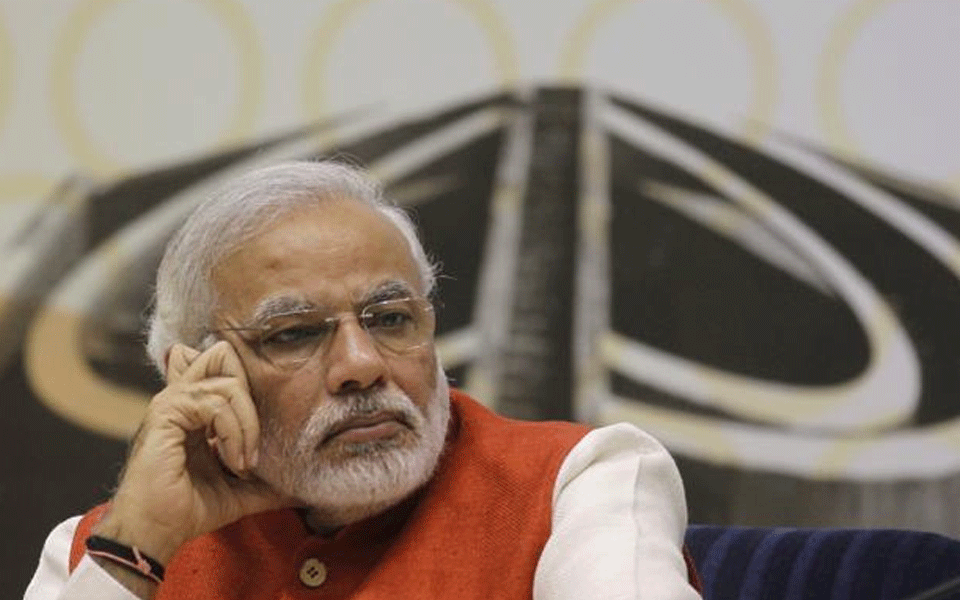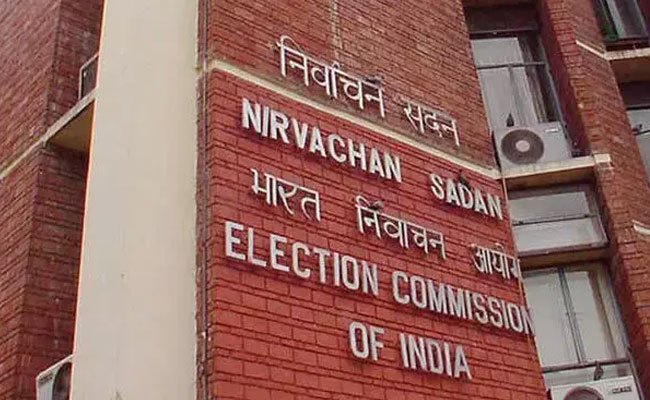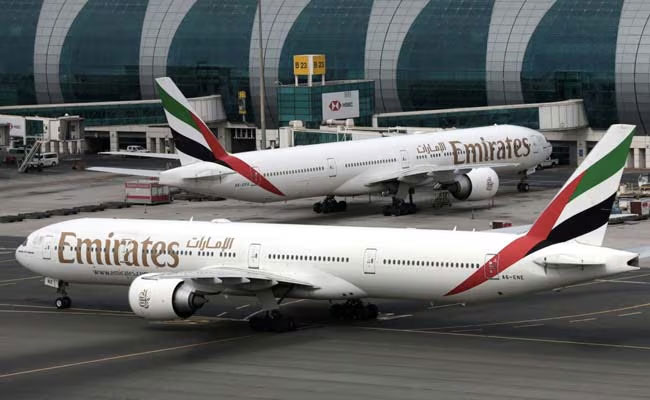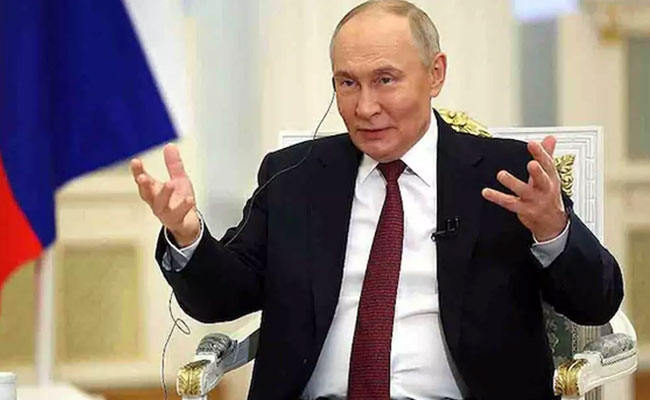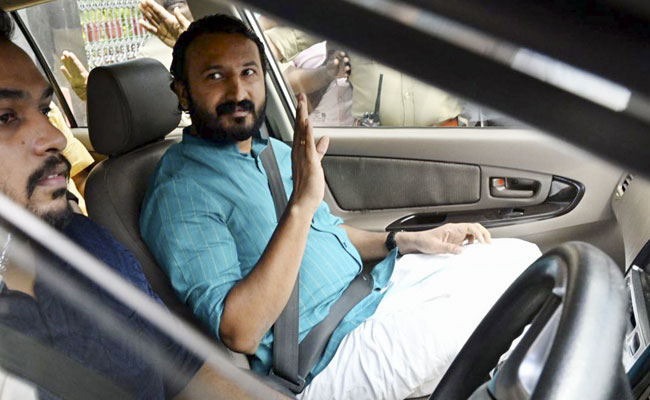On 28 August, the Pune Police arrested five activists—the trade-unionist and lawyer Sudha Bharadwaj, the writers Gautam Navlakha and Varavara Rao, the lawyers Arun Ferreira and Vernon Gonsalves—and conducted search raids at the homes of several others. The police have offered different explanations for the arrests—including a purported connection to the violence that broke out at Bhima Koregaon in early January, an “anti-fascist plot” to overthrow the government, and reportedly, yet another plot to assassinate Prime Minister Narendra Modi. During his reign as chief minister of Gujarat, in his campaign ahead of the 2014 general elections, and while serving as the country’s prime minister, Modi has survived several reported plots and attempts to kill him.
In early June this year, in a similar police operation across multiple states, the Pune Police had arrested five individuals on allegations of being “top urban Maoist operatives” who incited the Bhima Koregaon violence. Two days after the arrests, the police claimed to have seized a letter from the house of Rona Wilson, a prominent activist who was one of the five people arrested, which mentioned a “Rajiv Gandhi style” plot to assassinate Modi. On 31 August, in a press conference about the recent spate of arrests, the additional director general of Maharashtra Police, Param Bir Singh, stated that the police had “conclusive proof” against the activists, while referring to the letter and “thousands” of other documents seized from Wilson’s house.
The police did not, however, clarify what evidence they have to indicate that any of the activists arrested in August were involved in a plot to kill the prime minister. The circumstances surrounding all the purported assassination plots against Narendra Modi are intriguing—for the backgrounds of the individuals allegedly plotting the murder, for the political climate in which they were revealed, and for the media organisations that break the news. Modi’s political opponents have rubbished the news of the assassination plot that reportedly emerged from the Bhima Koregaon crackdown—the Rashtriya Janata Dal claimed that the threat to Modi’s life was “a planted story”; Sharad Pawar, the veteran leader of the National Congress Party, said the purported letter was “being used to garner people’s sympathy” and the Congress dismissed the report as “Modi’s old tactic.” Given the gravity of a threat of assassination, and the nature of responses from opposition political parties, the reported instances of the plots to kill Modi and the circumstances surrounding them are worth revisiting. Below is a list of eight such reported plots to assassinate Narendra Modi.
Ishrat Jahan (2004)
On 15 June 2004, on the outskirts of Ahmedabad, officers of the Gujarat Police Crime Branch killed four people—three men and one woman—suspected to be Lashkar-e-Taiba operatives. Top police officials and the crime branch claimed that Ishrat Jahan, Javed Ghulam Sheikh, Amjad Ali Rana and Zeeshan Johar were on a mission to assassinate Modi, the then chief minister of Gujarat, for his perceived inaction during the communal violence in the state in 2002.
In September 2009, the Ahmedabad metropolitan magistrate SP Tamang identified the incident as a “fake encounter.” In a 243-page report, Tamang stated that the police officers had abducted the deceased from Mumbai and brought them to Ahmedabad on 12 June 2004, committed “cold-blooded murder” on the night of 14 June, and then planted weapons and explosives to implicate the deceased. In 2013, the Central Bureau of Investigation filed a chargesheet in the case before a special court at Mirzapur, in Ahmedabad, accusing seven police officers of the staged encounter killing. In a February 2016 piece published by The Caravan, Vrinda Grover, who has represented Jahan’s family in the case since 2008, stated that the CBI chargesheet had enough material to indicate that the encounter killings had political sanction. “It was within the knowledge of the present PM, Narendra Modi, as well as the present president of the Bharatiya Janata Party, Amit Shah. But that trail of evidence was never pursued by the CBI,” she alleged.
On 13 June 2004, the former prime minister Atal Bihari Vajpayee had stated in an interview to Zee TV that his failure to remove Modi after the Gujarat riots of 2002 had been one of the principle reasons behind the BJP-led government’s defeat in the subsequent general elections. In his book Modi and Godhra: The Fiction of Fact Finding, the journalist Manoj Mitta writes, “critical in saving Modi from Vajpayee’s renewed attack was this intervening circumstance: the Gujarat police’s sensational encounter with a nineteen-year-old student from Greater Mumbai, Ishrat Jahan, and three others, who were all allegedly on a mission to kill Modi.” Mitta adds, “It was brilliantly timed for Modi as his ‘would-be assassins’ were killed near Gandhinagar on 15 June, just two days after Vajpayee’s scathing observations on him.”
In a resignation letter dated 1 September 2013, which the Gujarat government refused to accept, DG Vanzara, an officer in the state police’s crime branch, stated, “We, being field officers, have simply implemented the policy of this government, which was inspiring, guiding and monitoring our actions from very close quarters.” Vanzara is one of the officers accused in the case concerning the encounter killing of Ishrat Jahan. In early August this year, the CBI court hearing the case rejected the discharge applications of Vanzara, and his former deputy NK Amin, who has also been accused of the staged encounter killing. The case is still ongoing before the CBI court.
Sohrabuddin Sheikh (2005)
On 22 November 2005, officials of the Gujarat Police and Rajasthan Police intercepted a bus in Hyderabad, in which the alleged gangster Sohrabuddin Sheikh and his wife Kauser Bi were travelling, and took them to a farmhouse near Ahmedabad. According to the CBI’s chargesheet in the case, four days later, Sohrabuddin Sheikh was gunned down by the Gujarat Police in a “fake encounter.” Two days later, the chargesheet adds, the police killed Kauser Bi, and in December the next year, Sohrabuddin’s associate Tulsiram Prajapati was shot dead as well.
The Gujarat police had later claimed that Sohrabuddin, too, was a Lashkar-e-Taiba operative who was planning to assassinate Modi. But following the intervention of the Supreme Court, in a petition filed by Sohrabuddin’s brother, Rubab Uddin, the investigation was transferred to the CBI, in January 2010. In July that year, the investigating agency filed a supplementary chargesheet, in which it accused, among others, the police officers DG Vanzara, NK Amin, and Rajkumar Pandian, and the then minister of state for home in Gujarat, Amit Shah. All four, and several others accused in the case, were subsequently discharged. According to the CBI chargesheet, police officials from Gujarat and Rajasthan “stage managed the encounter killing of Shri Sohrabuddin in Ahmedabad.” The charge sheet further states, “It was shown that Sohrabuddin had come to Ahmedabad for killing a prominent political leader.”
Different accounts have since emerged about the motivation behind the allegedly staged encounter killing of Sohrabuddin Sheikh, Kausar Bi and Tulsiram Prajapati. According to the chargesheet, “The elimination of Sohrabuddin was being used for extortions by the accused persons to establish an element of fear in the minds of businessmen and others.” But during a CBI interrogation after he submitted his resignation letter, Vanzara reportedly spoke about Sohrabuddin’s connection to the murder of Haren Pandya, the former home minister of Gujarat who was killed in Ahmedabad in 2003.
The case into the encounter killing of Sohrabuddin is also still ongoing before a CBI court in Mumbai. As of early August this year, over 65 witnesses in the case had turned hostile.
General-election campaign (2013)
On 27 October 2013, serial bomb blasts occurred in Patna’s Gandhi Maidan and the city’s railway station, ahead of a campaign rally by Modi, who was then a prime ministerial candidate. Six persons were killed and at least 89 injured in the blasts. A bomb-disposal squad subsequently found two unexploded IEDs around the area. The National Investigation Agency filed a chargesheet in the case in April 2014, and a supplementary chargesheet in August 2014, in which it alleged that the banned organisation Students Islamic Movement of India had carried out the attack. The supplementary chargesheet states that “the accused persons perceived Shri Narendra Modi was responsible for post Godhra riots in Gujarat,” and after observing his security arrangements, they concluded that it would be “impossible to attack” him with firearms. Instead, it was “decided to explode IEDs in the election rally of Shri Narendra Modi, with intention to kill a large number of common people which would lead to a stampede and in the ensuing melee, Shri Narendra Modi could easily targeted from a close range.”
In October 2017, a juvenile was convicted for the incident by a Juvenile Justice Board and sentenced to three years in a remand home. The case before the NIA court is still ongoing.
WhatsApp death threat (2015)
In May 2015, Modi was scheduled to address a rally in Mathura, in Uttar Pradesh, to commemorate the completion of one year of the BJP-led government at the centre. A day before the rally, it was reported that the Uttar Pradesh police, media personnel and the district administration had received a WhatsApp message threatening to kill the prime minister.
According to media reports, the sender was identified as one Ramvir, and his brother Laxman Singh was taken into custody and interrogated. The district magistrate, Rajesh Kumar, reportedly stated that Ramvir had sent similar messages on previous occasions as well, and that “a case under relevant sections of the IPC will be registered against him.” The media’s coverage of the WhatsApp message appears to rely on the Press Trust of India’s report on the incident, and there do not seem to be any subsequent reports about whether Ramvir was arrested or convicted of the threat to assassinate Modi.
Post-demonetisation (2016)
On 19 November 2016, ten days after Modi announced that 500-rupee and 1,000-rupee currency notes were being invalidated, the Times of India reported that the Delhi Police had received a call about an alleged plot to kill the prime minister. When the police traced the person to whom the number was issued, he claimed that he had lent his SIM card to a relative, who in turn informed the police that a stranger had borrowed his phone to make an urgent call. Few media organisations appear to have reported the purported assassination plot, and none of them published any follow-up report. The Times of India’s report concludes stating, “The Special Cell and Crime Branch are still working on it.”
Uttar Pradesh election rally (2017)
In February 2017, ahead of Modi’s campaign rally for the Uttar Pradesh assembly elections in the town of Mau in the eastern part of the state, the area’s additional superintendent of police, RK Singh, stated that the police had received information about a life-threatening attack on the prime minister. According to the media reports, Singh claimed that the threat was from Rasool Pati, one of the accused in the Haren Pandya murder case. Singh also added reportedly added that there was a plan to attack Modi’s cavalcade with rocket launchers and explosives. The rally took place with no such attack. According to an India Today report, the Delhi Police arrested a Delhi University student, on 27 February, for making a hoax call to the Mau police.
ISIS assassination plot (May 2018)
On 10 May, two days ahead of the Karnataka assembly elections, Times Now reported that there was an Islamist radical plot to kill Narendra Modi, and the next day, Zee News published a similar report. Both reports referred to a chargesheet filed by the Gujarat Anti-Terrorism Squad before a court in the state’s Ankleshwar city, alleging a plot by Islamic State of Iraq and Syria operatives to kill the prime minister. In particular, both reports referred to one line from a WhatsApp message, which stated, “Yeah, let’s take Modi out with a sniper rifle.” Modi survived the alleged Islamist threat, though the BJP lost the assembly elections to a post-poll coalition between the Congress and the Janata Dal (Secular).
Bhima Koregaon arrests (June 2018)
The letter purportedly seized by the Pune Police from the house of Rona Wilson, who was one of five individuals arrested in June this year in relation to the violence at Bhima Koregaon, stated: “We are thinking along the lines of another Rajiv Gandhi type incident.” Several aspects of this letter, however, raised questions about its authenticity—least of all the fact that it opens with a declaration of “Red Salutes,” which is presumably a literal translation of the customary communist greeting “Lal Salaam.”
According to a report published by Newslaundry in the wake of the arrests, the letter was allegedly seized during a raid on Wilson’s house in April this year. The report pointed out that curiously, the letter was released to the media before it was produced in court. This becomes even more puzzling in view of the fact that the police application seeking remand of the arrested activists did not make any mention of this alleged assassination plot. More importantly, any security agency familiar with Maoist operations would be aware that they are not an amateur organisation, and know that they do not even reveal names in their letters, much less their operational details. But the explicit details mentioned in the letter foretold the arrests to come—it referred to “Arun, Vernon and others.” Arun Ferreira, Vernon Gonsalves and three others were arrested in August.
It is pertinent to consider why these alleged conspirators make no efforts at subtlety about a plot to kill the prime minister. Perhaps it should not be that surprising, given that such plots against Narendra Modi in the past appear to have been marked by hoax calls, messages to the media, and even cases fabricated by the police.
Courtesy: www.caravanmagazine.in
Let the Truth be known. If you read VB and like VB, please be a VB Supporter and Help us deliver the Truth to one and all.
Ahmedabad (PTI): The ongoing Special Intensive Revision (SIR) of the electoral rolls in Gujarat has revealed that more than 17 lakh deceased voters were still included in the existing voter list across the state, a release by the office of the Chief Electoral Officer (CEO) has stated.
According to the release issued on Thursday, the SIR exercise started in Gujarat on November 4 with booth-level officers (BLOs) distributing enumeration forms in their designated areas.
The campaign will continue till December 11.
"In the last one month, enumeration forms have been distributed to more than five crore voters registered in the 2025 electoral roll. In most of the 33 districts, 100 per cent of the distribution has been completed. Work on digitising the returned forms is currently underway. So far, the digitisation work has been completed in 12 out of 182 assembly constituencies," it said.
These include Dhanera and Tharad of Banaskantha district, Limkheda and Dahod (ST) of Dahod district, Bayad of Aravalli district, Dhoraji, Jasdan and Gondal of Rajkot district, Keshod of Junagadh district, Mehmadabad of Kheda district, Khambhat of Anand district and Jalalpore of Navsari district.
Dang district is at the forefront in this work with 94.35 per cent digitisation of the counting forms, said the release.
"During this exercise, it was revealed that 17 lakh deceased voters were still included in the electoral roll across the state. More than 6.14 lakh voters were found absent from their addresses. It has been noticed that more than 30 lakh voters have permanently migrated," the release said.
BLOs found more than 3.25 lakh voters in the "repeated" category, which means that their names figured at more than one place, the release stated.

